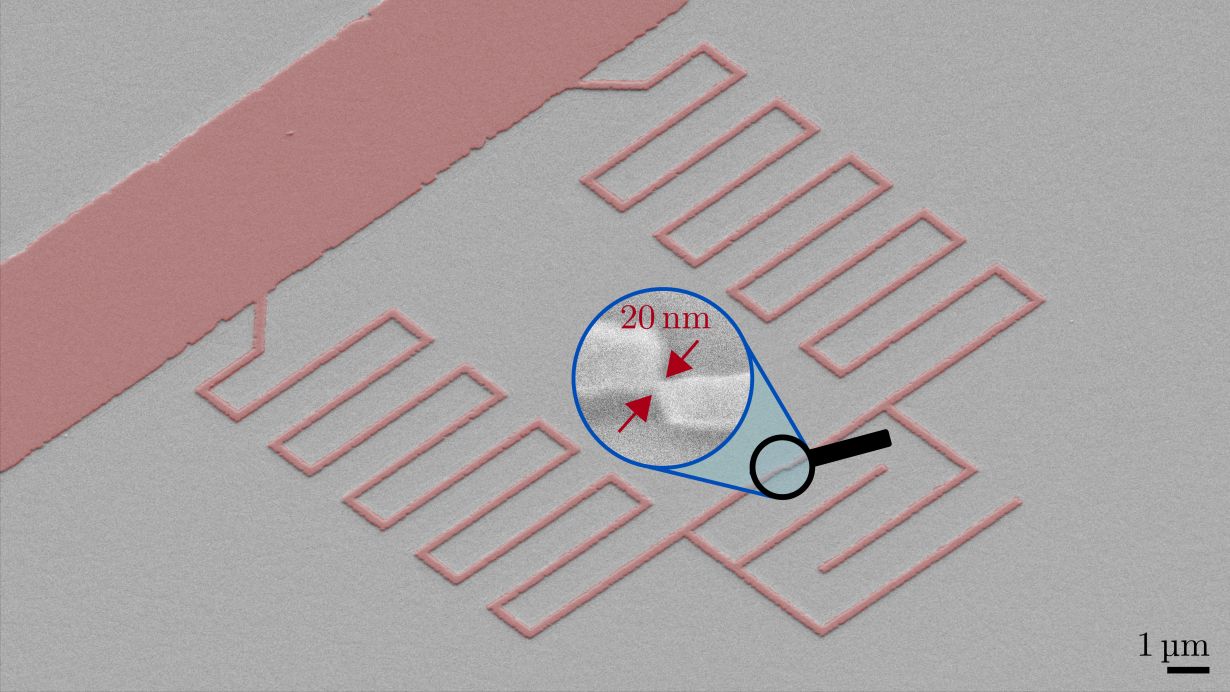Quantum computers are expected to be used in future. Their smallest computation units are quantum bits (qubits). Qubits do not only have two states, but also states in between. Hence, they process more information within shorter periods of time. However, maintaining such a state for a longer time is difficult and depends on materials properties. A team of KIT researchers has now generated qubits that are a hundred times more sensitive to material defects, which is decisive to eliminate them. The findings are published in Nature Materials (DOI: 10.1038/s41563-022-01417-9).
Quantum computers can more rapidly process large amounts of data, because they carry out many computation steps in parallel. The information carrier of the quantum computer is a qubit. Qubits do not only possess the information of “0” and “1,” but also values in between. However, the difficulty consists in producing qubits that are small enough and can be switched quickly enough to execute quantum calculations. A very promising option are superconducting circuits. Superconductors are materials that have no electrical resistance at extremely low temperatures and, hence, conduct electrical current without any losses. This is important to maintain the quantum state of qubits and to connect them efficiently.
Gralmonium Qubits: Superconducting and Sensitive
KIT researchers have now succeeded in developing novel, unconventional superconducting qubits. “The core of a superconducting qubit is a so-called Josephson junction that serves to store quantum information. Here, we made a crucial modification,” says Dr. Ioan M. Pop from KIT’s Institute for Quantum Materials and Technologies (IQMT). As a rule, such Josephson junctions for superconducting quantum bits are obtained by a thin oxide barrier separating two aluminum layers. “For our qubits, we use a single layer of granular aluminum, a superconductor made of aluminum grains of a few nanometers in size that are embedded in an oxide matrix,” Pop says. Then, the material self-structures in a three-dimensional network of Josephson junctions. “It is fascinating to see that all properties of our qubit are dominated by a very small junction of 20 nm only. Consequently, it acts like a magnifying glass of microscopic material defects in superconducting qubits and offers a promising option for improvement,” Simon Günzler, IQMT, adds.
Qubits Entirely Made of Granular Aluminum
The progress achieved by the team is based on a previously tested approach using so-called fluxonium qubits. Parts of this predecessor version were made of granular aluminum, others consisted of conventional aluminum. Now, the entire qubits are made of granular aluminum. “As if a quantum circuit would be cut out of a metal film. This results in entirely new opportunities for industrial production by etching processes and extended application of qubits, for example in strong magnetic fields,” says Dennis Rieger from KIT’s Physikalisches Institut.
This invention is protected by a European patent.
Original Publication
D. Rieger, S. Günzler, M. Spiecker, P. Paluch, P. Winkel, L. Hahn, J. K. Hohmann, A. Bacher, W. Wernsdorfer, and I. M. Pop: Granular Aluminium Nanojunction Fluxonium Qubit. Nature Materials, 2022. DOI: 10.1038/s41563-022-01417-9
https://www.nature.com/articles/s41563-022-01417-9
Details on KIT Materials Center: https://www.kit.edu/topics/materials.php
In close partnership with society, KIT develops solutions for urgent challenges – from climate change, energy transition and sustainable use of natural resources to artificial intelligence, sovereignty and an aging population. As The University in the Helmholtz Association, KIT unites scientific excellence from insight to application-driven research under one roof – and is thus in a unique position to drive this transformation. As a University of Excellence, KIT offers its more than 10,000 employees and 22,800 students outstanding opportunities to shape a sustainable and resilient future. KIT – Science for Impact.

